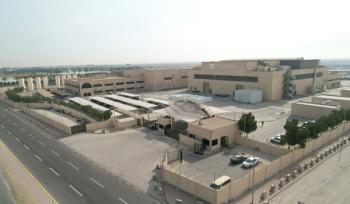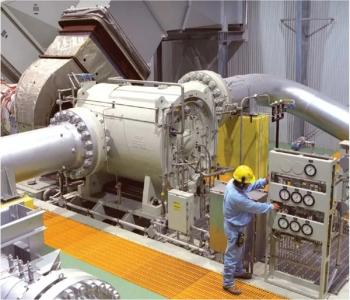
OCOchem, U.S. Army Completes Phase II Project to Develop, Test Formate Electrolyzer Cell
The 15,000 cm2 electrolyzer cell has been upgraded to industrial-scale and helps to generate hydrogen formate through CO2 electrolysis.
OCOchem and the United States Army have finished a Phase II project aimed at developing and testing a formate electrolyzer cell. OCOchem scaled up the design from 10,000 cm2 to 15,000 cm2 over three years to reach the cell’s current industrial scale form. At industrial scale, the company’s CO2 electrolyzer is 650% larger than other platforms and will scale out into multi-cell stacks in a large pilot plant.
“CO2 electrolysis has historically been an academic cottage industry with little work done on cells much larger than a baseball card. The OCOchem approach has been different, focusing on rapid step change scale-up and then iterating much of the design with every 10x scale-up increment,” said Todd Brix, OCOchem CEO and Co-Founder. “What works at a tiny scale is not what works at a larger scale. We knew that and our constraints going in. The innovative modification and integration of off-the-shelf industrial-grade components, parts and systems, custom chemistry, and in-house fabrication of large-scale gas diffusion electrodes we deploy allows us to ‘live within constraints.’”
The CO2 electrolyzer produces an organic platform molecule called hydrogen formate. The design does this by using clean electricity and advanced engineering to convert CO2 and water into carbon-based molecules. Hydrogen formate is the use-ready liquid form of energized CO2 and serves as a precursor chemical, providing carbon and hydrogen in a single molecule capable of synthesizing a range of materials, chemicals, and fuels. OCOchem’s formate generation process, known as electro-formation, is designed for 104% carbon-to-product efficiency, 85% energy efficiency, room temperature and pressure operation, and a reduction in waste by-products.
“CO2 regeneration is a much more impactful way to reduce CO2 emissions using captured CO2,” said Brix. “Instead of just moving and burying a ton of CO2 and hoping it doesn’t come back out of the ground, you instead convert that CO2 into a value-added useful product which displaces the same product made conventionally from fossil fuels and avoids the 5-10 tons of CO2 emissions associated with fossil fuel use as a feedstock as well as use of fossil fuel process energy used to make it.”
Formate has several applications including silage preservatives, corrosion-free deicing salts, drilling fluids, fertilizers, and the manufacture of leather and clothing. It also serves as a liquid carrier of hydrogen and carbon oxides and plays a critical role in rubber production, bacterial disinfection, and waste and feed water treatment.
OCOchem’s electrolyzer minimizes the impact of carbon emissions by converting it to a valuable end-product, similar to the way in which the
Newsletter
Power your knowledge with the latest in turbine technology, engineering advances, and energy solutions—subscribe to Turbomachinery International today.




